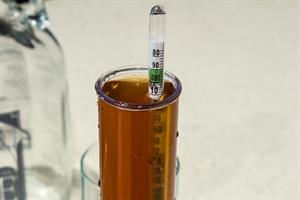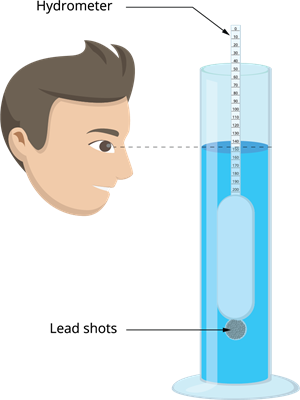PDF chapter test TRY NOW
A direct reading instrument that is used to measure the density of a liquid is a hydrometer. Hydrometer works on the principle of flotation.
Flotation principle:
The weight of the liquid displaced by the submerged portion of the hydrometer is equal to the weight of the hydrometer.

- A hydrometer is made up of a cylindrical stem having a narrow tube at its upper end and a spherical bulb at its lower end.
- The lower spherical bulb is partially filled with mercury or lead shots. This arrangement helps the hydrometer to float or stand vertically in liquid.
- The narrow tube has markings that show the relative density of a liquid.
- The liquid to be examined is poured into the glass jar.
- The hydrometer is gently dropped into the liquid until it floats freely.
- The liquid's relative density can be found by the reading against the level of liquid touching the tube.

Hydrometer
Hydrometers may be modified for different uses, such as saccharometer for measuring the density of sugar in a liquid, lactometers for measuring the density of milk, and alcoholometer for measuring higher alcohol levels in spirits.
Reference:
https://www.flickr.com/photos/taubinphoto/8670718166/
